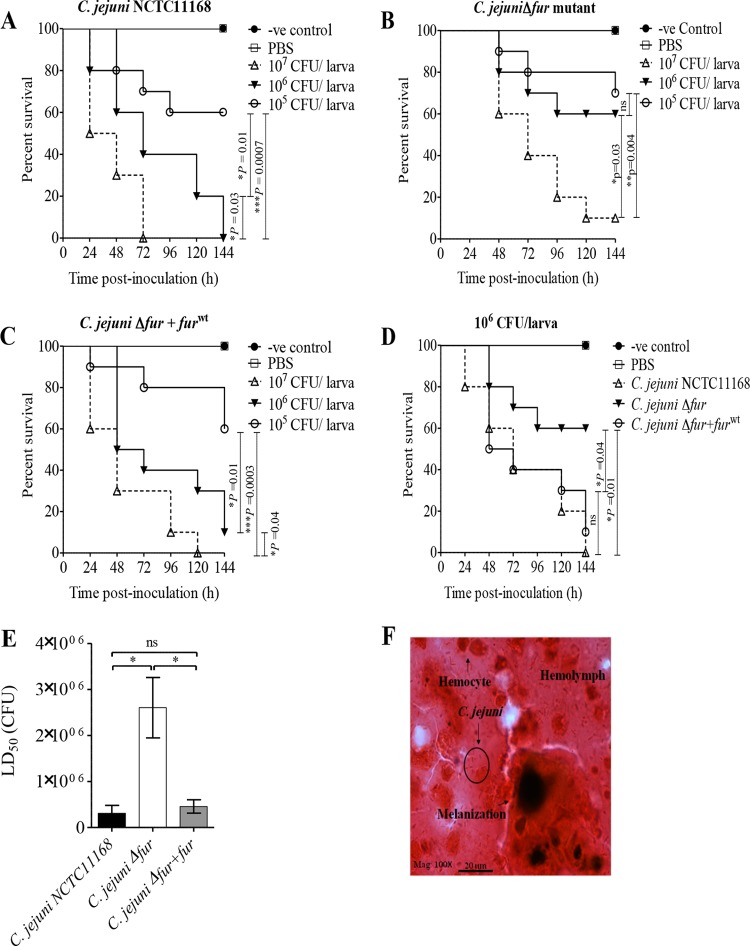FIG 8.
Fur is important for C. jejuni pathogenesis in G. mellonella larvae. G. mellonella larvae (n = 10 larvae/group) were inoculated with the serially diluted (107, 106, and 105 CFU) C. jejuni wild-type, Δfur, or Δfur+furWT strain. Larval survival was monitored every 24 h for 6 days and was plotted using Kaplan-Meier survival curves. (A to C) Survival curves of G. mellonella larvae inoculated with different C. jejuni strains: the wild type (A), the Δfur mutant (B), or the Δfur+furWT strain (C). (D) The C. jejuni wild-type and Δfur+furWT strains killed more larvae than the Δfur mutant at the 106-CFU dose (P = 0.01 and 0.04, respectively; log-rank test). (E) The C. jejuni Δfur mutant has a significantly higher LD50 than either the wild-type or Δfur+furWT strain; thus, this mutant is less virulent. *, P < 0.05, which was considered significant using a Mann-Whitney rank sum test; ns, not significant. (F) Microscopic examination of C. jejuni-infected larvae revealed C. jejuni cells surrounded by larval hemocytes, hemolymph, and melanin pigment. Gram stain was used. Mag, magnification; -ve, negative.

